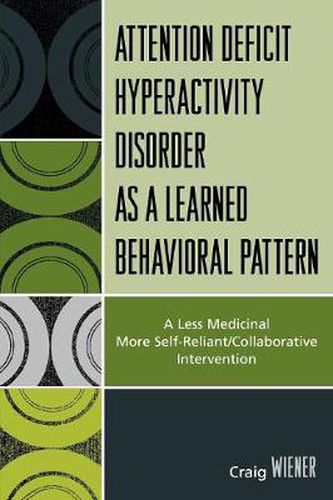Readings Newsletter
Become a Readings Member to make your shopping experience even easier.
Sign in or sign up for free!
You’re not far away from qualifying for FREE standard shipping within Australia
You’ve qualified for FREE standard shipping within Australia
The cart is loading…






Traditional treatments of Attention Deficit Hyperactivity Disorder (ADHD) have been designed to contain a neurobiological delay that renders individuals less capable of resisting shortsighted behaviors. This work critiques that analysis of ADHD, and proposes an alternative strategy to reduce the incidence of ADHD responses. Rather than invoke biological determinism, with all of its contradictions and pitfalls, ADHD patterning is understood within a learning paradigm - a well accepted conceptual framework within the field of Psychology. By focusing on the ways in which ADHD actions and reactions are reinforced, readers will notice an increase in precision and scope when accounting for ADHD frequency rates. While most ADHD therapies are based on medicine and stringency, this book advises to develop the child’s autonomy and encourages interdependent communication to avoid the flaws of traditional treatments. Because ADHD remedies have not shown impressive long-term efficacy, the book’s goal is to present new options to arm practitioners with viable alternative solutions to ADHD behaviors.
$9.00 standard shipping within Australia
FREE standard shipping within Australia for orders over $100.00
Express & International shipping calculated at checkout
Traditional treatments of Attention Deficit Hyperactivity Disorder (ADHD) have been designed to contain a neurobiological delay that renders individuals less capable of resisting shortsighted behaviors. This work critiques that analysis of ADHD, and proposes an alternative strategy to reduce the incidence of ADHD responses. Rather than invoke biological determinism, with all of its contradictions and pitfalls, ADHD patterning is understood within a learning paradigm - a well accepted conceptual framework within the field of Psychology. By focusing on the ways in which ADHD actions and reactions are reinforced, readers will notice an increase in precision and scope when accounting for ADHD frequency rates. While most ADHD therapies are based on medicine and stringency, this book advises to develop the child’s autonomy and encourages interdependent communication to avoid the flaws of traditional treatments. Because ADHD remedies have not shown impressive long-term efficacy, the book’s goal is to present new options to arm practitioners with viable alternative solutions to ADHD behaviors.